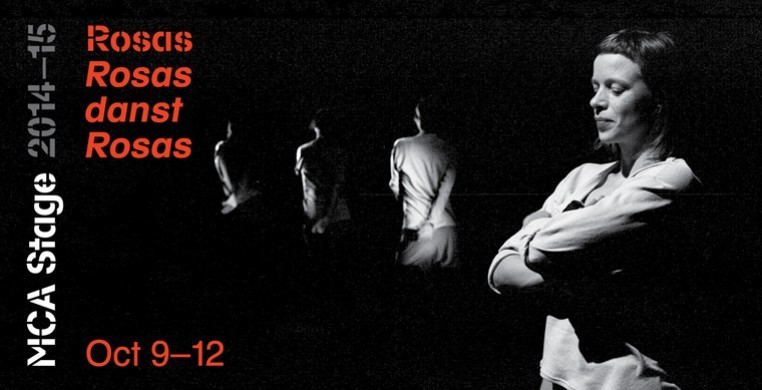The revival tour of Rosas danst Rosas (1983) shows this weekend at the Museum of Contemporary Art (MCA). The remount is a particularly exciting event in the fall dance lineup given its historical significance, ingenious composition, and ability to endure three decades with no hint of appearing dated. The mathematical movement maze Rosas danst Rosas is composed of four sections, for four women, each section not much different from the other. It’s a series of gestures and pedestrian movements, set in methodical mixings seen over, and over, and over, for nearly two hours, without rest. Given how Belgian choreographer Anna Teresa De Keersmaeker builds a dance, one wonders what her closet looks like.
Rife with abrupt starts and stops, uncomfortably long pauses, and pinpoint precision, the work is so tightly organized that one questions whether s/he is viewing art or assembly line. The abundant use of gesture - wiping the hair back, grabbing under the breast, brisk turns of the head, a slice of the arm to the pelvis, exposing the shoulder before quickly tugging a sweater back into place, - there’s a not-quite-sexual tension to the work in which the women wrestle between assertion and submission. Though built on top of a repetitive, unemotional structure, moments of this unchanging, unyielding dance seem intensely intimate. The audience imagines relationships developing between performers, whose only interactions are a periodic nod and a smirk inserted into the score. Unlike many durational scores, there is no climax, and no resolution.
Rosas danst Rosas came to the forefront in the late 1990s as an hour-long dance film (and then again in the past few years when Beyonce “appropriated” it). The film is easier to watch then the stage version; the beauty of film direction is its ability to show the viewer where to look. Assumedly, filming also provided the dancers with breaks between takes, and the background setting of a sterile old school building provided context to the work. Despite the unyielding intensity and level of commitment demanded of each performer Thursday night (Tale Dolven, Sandra Ortega Bejarano, Sue-Yeon Youn, and Cynthia Loemij, who appeared in the 1997 film), they never waned. Not a finger, strand of hair, or blink of the eye was misplaced.
It’s hard to know what kind of mental state a dancer must assume to perform this work live on stage, and Rosas danst Rosas demands a degree of fervency of live concert audiences, too. Truth be told, it’s hard to stay “in it” the whole time. The audience, at least, has the luxury of fading in and out of attention. It’s a struggle to keep one’s mind from wandering about, from losing focus, and thinking about what to eat for lunch tomorrow. It’s meditative, in the way that running on a treadmill is meditative. Lots of people don’t like running on treadmills, and to be sure, plenty won’t like Rosas danst Rosas. About ten minutes into Thursday’s premiere at the MCA, audience members began to realize how much work it would be, and a few trickled out of the theater. Some dances are meant to entertain, and others, as in Rosas danst Rosas, are meant to provoke. The thing is, durational art (whatever that means) is intensely uncomfortable and frustrating. That is the point, and perhaps part of why this dance has so gloriously withstood the test of time.
—
Rosas danst Rosas takes place Oct. 9 – 11, 7:30 pm, and October 12, 3pm at the Edlis Neeson theater of the Museum of Contemporary Art (220 E. Chicago Ave.) Tickets are $28 (Students $10). For tickets and further information, click on "Upcoming Events."

